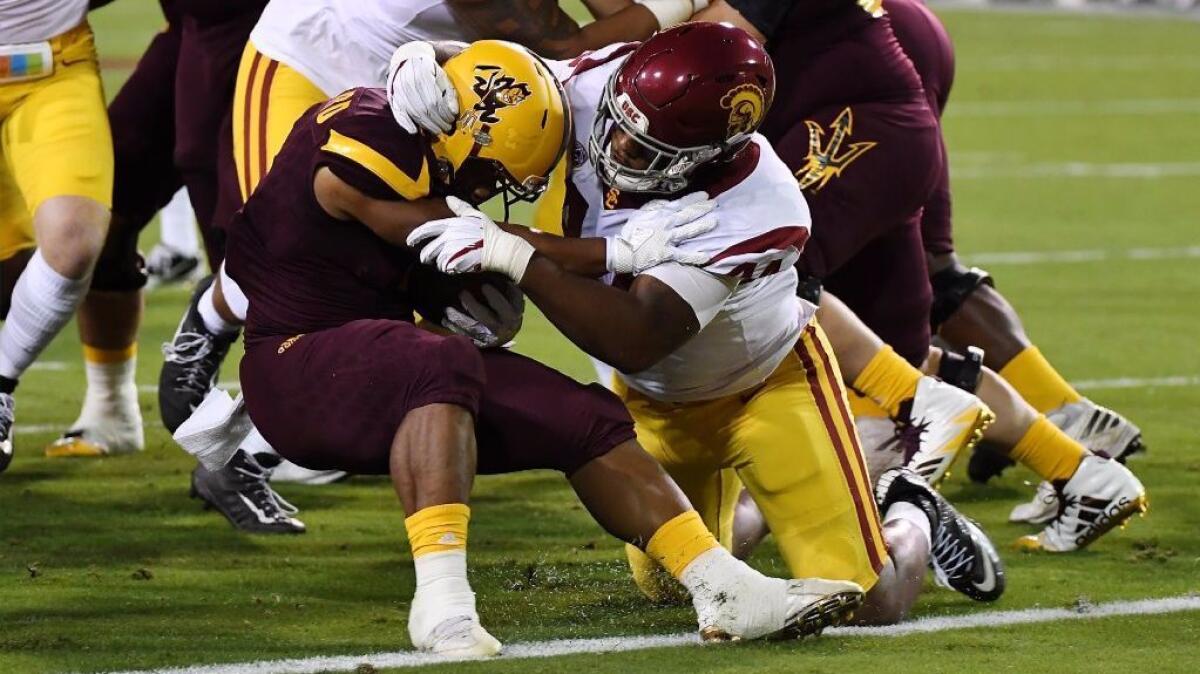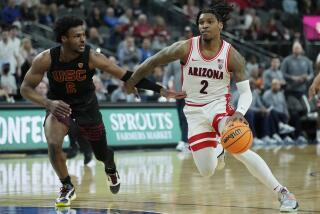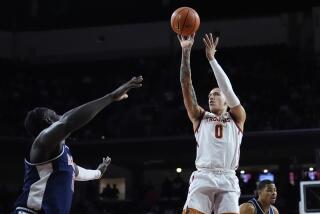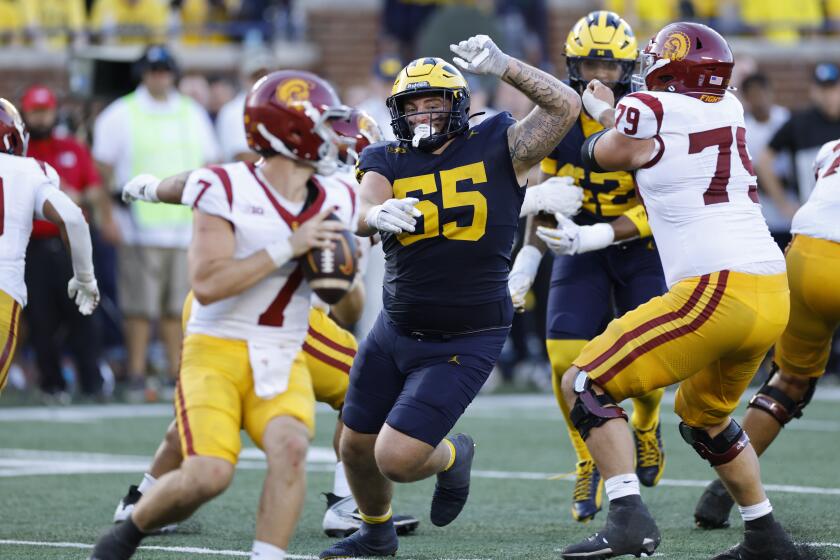USC knows key to a win over Arizona lies in its loss to Notre Dame

In 2010, Clancy Pendergast faced a problem. He was in his first season as California’s defensive coordinator, and looming late in the season was Oregon, undefeated and at the height of coach Chip Kelly’s offensive wizardry. The Ducks had put up 42 points or more in each of their nine games. They ran the ball almost at will.
Pendergast is experienced, matter-of-fact and quiet. He is also a calculated gambler. In the week before the game, he devised a perilous scheme.
California swarmed its defenders around the line of scrimmage. It dared Oregon to throw. Pendergast locked his cornerbacks in risky one-on-one coverage for almost the entire game. The safeties sold out against the run. Oregon looked lost. The Ducks won, but California’s defense was a stunning success. It allowed only 15 points.
Seven years later, Pendergast faces a similar challenge as USC’s defensive coordinator. If No. 17 USC defeats No. 22 Arizona on Saturday at the Coliseum, USC will be on the doorstep of a Pac-12 South division title. The Trojans would need only to win one of their final two games. (Another loss from Arizona, UCLA and Arizona State also would clinch it.) Safety Chris Hawkins said USC is treating this week as if it were “the playoffs.”
Arizona is among the hottest teams anywhere, powered by one of the best running attacks in college football , led by arguably a better running quarterback than anyone. Arizona ranks No. 5 in rushing offense, at almost 339 yards per game. Quarterback Khalil Tate is an outside contender for the Heisman Trophy despite having started just three games.
Pendergast has historically tried to shut down an offense’s best option. Arizona likes to run? Pendergast wants to make the Wildcats pass to win. Just two weeks ago, however, Notre Dame trampled that strategy with its own mobile quarterback and heavy rushing attack.
USC’s shot at the Pac-12 South will hinge on how well it learned from those mistakes.
After that game, coach Clay Helton identified three areas where Notre Dame exploited USC’s defense. First, he said, Notre Dame introduced new offensive wrinkles USC hadn’t seen before. Second, USC’s front seven was sloppy, leaving gaps unplugged. And third, Notre Dame’s quarterback gashed USC with his legs.
Helton declared that Saturday “is going to be a really disciplined football game by our defense.”
“What we’ve stressed to our defense is not taking the eye candy of chasing the quarterback,” Helton said. “Because what ends up happening to you, like you saw at Notre Dame, even Washington State, a linebacker gets out of a gap because all of a sudden he flinches and takes a step toward the quarterback, thinking he pulled the ball, and he got out of his gap.”
Cornerback Jack Jones said USC can’t afford to have even one player blow an assignment against Arizona.
“One guy leaving their gap can lead to big plays,” he said. “We can’t have that playing against this team.”
Pendergast hesitated to completely sell out against Notre Dame’s running game. USC used its preferred nickel defense, with one fewer defender in the box, on 64% of plays. Often, that was because Notre Dame forced the issue by spreading the field
Helton said he saw many similarities between Notre Dame and Arizona, an even more spread-happy team, though Pendergast cautioned that the two run different offenses. Notre Dame runs a power blocking scheme, with lots of pulling guards and tackles. Arizona likes to push the tempo and uses mostly zone blocking.
“But the ability to have the zone-read with the quarterback is there that obviously Notre Dame had as well,” Pendergast said.
Because of the zone-read, USC has spent much of this week preparing for Tate, who finds the smallest of holes like water finds a leak. In practice, USC used receiver Randal Grimes and defensive back Dominic Davis, a former 100-meter sprinter, as the scout team quarterbacks. USC acknowledged that there are no perfect stand-ins.
“He’s playing like Lamar Jackson last year,” Hawkins said of Tate. “If he didn’t start so late in the season, I think he probably would’ve been in the Heisman race a little bit more. He’s fast, big, strong, everything you can ask for. And he’s actually putting the ball on target this year.”
Hawkins said Tate doesn’t remind him of Notre Dame’s Brandon Wimbush, who he said likes to scramble more. Tate runs lots of designed runs.
But there was one striking similarity: Stopping either from making big plays requires discipline — and the right game plan.
Follow Zach Helfand on Twitter @zhelfand
More to Read
Go beyond the scoreboard
Get the latest on L.A.'s teams in the daily Sports Report newsletter.
You may occasionally receive promotional content from the Los Angeles Times.







